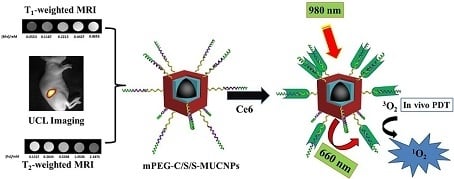Role of Mn2+ Doping in the Preparation of Core-Shell Structured Fe3O4@upconversion Nanoparticles and Their Applications in T1/T2-Weighted Magnetic Resonance Imaging, Upconversion Luminescent Imaging and Near-Infrared Activated Photodynamic Therapy
Abstract
:1. Introduction
2. Materials and Methods
2.1. Materials
2.2. Synthesis of OA Coated Fe3O4@NaYF4:xMn (x = 0, 30 mol %) NPs
2.3. Synthesis of OA Coated Fe3O4@NaYF4:18%Yb/2%Er/xMn(x = 0, 30 mol %) NPs
2.4. Synthesis of OA Coated Fe3O4@NaYF4:xMn@NaYF4:18%Yb/2%Er/xMn(x = 30 mol %) Core/Inert Shell/Active Shell Structured MUCNPs
2.5. Synthesis of mPEG-Functionalized Fe3O4@NaYF4:xMn@NaYF4:18%Yb/2%Er/xMn(x = 30 mol %) Core/Inert Shell/Active Shell Structured MUCNPs
2.6. Synthesis of mPEG-Fe3O4@NaYF4:xMn@NaYF4:18%Yb/2%Er/xMn (x = 30 mol %) Core/Inert Shell/Active Shell Structured MUCNPs loaded with Ce6
2.7. Cytotoxicity Assay
2.8. In Vivo UCL Imaging
2.9. In Vitro T1/T2-Weighted MRI
2.10. Characterization
3. Results
3.1. Influence of Mn2+ Doping on the Formation of Core-Shell Structured MUCNPs
3.2. Preparation of Core/Inert Shell/Active Shell Structured MUCNPs
3.3. In Vitro UCL Imaging and In Vitro T1/T2-Weighted MRI Imaging
3.4. Evaluation of PDT Performance of C/S/S-MUCNPs Loaded with Ce6
4. Conclusions
Supplementary Materials
Author Contributions
Funding
Acknowledgments
Conflicts of Interest
References
- Zhang, L.; Wang, Y.S.; Yang, Y.; Zhang, F.; Dong, W.F.; Zhou, S.Y.; Pei, W.H.; Chen, H.D.; Sun, H.B. Magnetic/upconversion luminescent mesoparticles of Fe3O4@LaF3:Yb3+, Er3+ for dual-modal bioimaging. Chem. Commun. 2012, 48, 11238–11240. [Google Scholar] [CrossRef] [PubMed]
- Xu, F.L.; Liu, M.X.; Li, X.; Xiong, Z.J.; Cao, X.Y.; Shi, X.Y.; Guo, R. Loading of indocyanine green within polydopamine-coated laponite nanodisks for targeted cancer photothermal and photodynamic therapy. Nanomaterials 2018, 8, 347. [Google Scholar] [CrossRef] [PubMed]
- Nancy, L.O.; Rachel, L.M.; Irina, B. The role of apoptosis in response to photodynamic therapy: What, where, why and how. Photochem. Photobiol. Sci. 2002, 1, 1–21. [Google Scholar] [CrossRef]
- Darbandi, M.; Nann, T. One-pot synthesis of YF3@silica core/shell nanoparticles. Chem. Commun. 2006, 776–778. [Google Scholar] [CrossRef] [PubMed]
- Gai, S.L.; Yang, P.P.; Li, C.X.; Wang, W.X.; Dai, Y.L.; Niu, N.; Lin, J. Synthesis of magnetic, up-conversion luminescent and mesoporous core-shell-structured nanocomposites as drug carriers. Adv. Funct. Mater. 2010, 20, 1166–1172. [Google Scholar] [CrossRef]
- Ansari, A.A.; Yadav, R.; Rai, S.B. Enhanced luminescence efficiency of aqueous dispersible NaYF4:Yb/Er nanoparticles and the effect of surface coating. RSC Adv. 2016, 6, 22074–22082. [Google Scholar] [CrossRef]
- Cheung, E.N.M.; Alvares, R.D.A.; Oakden, W.; Chaudhary, R.; Hill, M.L.; Pichaandi, J.Y.; Mo, G.C.H.; Yip, C.; Macdonald, P.M.; Stanisz, G.J.; et al. Polymer-stabilized lanthanide fluoride nanoparticle aggregates as contrast agents for magnetic resonance imaging and computed tomography. Chem. Mater. 2010, 22, 4728–4739. [Google Scholar] [CrossRef]
- Jana, N.R.; Patra, P.K.; Saha, A.; Basiruddin, S.K.; Pradhan, N. Imidazole based biocompatible polymer coating in deriving <25 nm functional nanoparticle probe for cellular imaging and detection. J. Phys. Chem. C 2009, 113, 21484–21492. [Google Scholar] [CrossRef]
- Jiang, S.; Win, K.Y.; Liu, S.H.; Teng, C.P.; Zheng, Y.G.; Han, M.Y. Surface-functionalized nanoparticles for biosensing and imaging-guided therapeutics. Nanoscale 2013, 5, 3127–3148. [Google Scholar] [CrossRef] [PubMed]
- Feng, W.; Han, C.M.; Li, F.Y. Upconversion-nanophosphor-based functional nanocomposites. Adv. Mater. 2013, 25, 5287–5303. [Google Scholar] [CrossRef] [PubMed]
- Huang, Z.Y.; Gao, H.P.; Mao, Y.L. Understanding the effect of Mn2+ on Yb3+/Er3+ upconversion and obtaining a maximum upconversion fluorescence enhancement in inert-core/active-shell/inert-shell structures. RSC Adv. 2016, 6, 83321–83327. [Google Scholar] [CrossRef]
- Zeng, L.Y.; Xiang, L.C.; Ren, W.Z.; Zheng, J.J.; Li, T.H.; Chen, B.; Zhang, J.C.; Mao, C.W.; Li, A.G.; Wu, A.G. Multifunctional photosensitizer-conjugated core–shell Fe3O4@NaYF4:Yb/Er nanocomplexes and their applications in T2-weighted magnetic resonance/upconversion luminescence imaging and photodynamic therapy of cancer cells. RSC Adv. 2013, 3, 13915–13925. [Google Scholar] [CrossRef]
- Cui, X.J.; Mathe, D.; Kovács, N.; Horváth, I.; Jauregui-Osoro, M.; Rosales, R.T.M.; Mullen, G.E.D.; Wong, W.; Yan, Y.; Krüger, D.; et al. Synthesis, characterization and application of core–shell Co0.16Fe2.84O4@NaYF4(Yb, Er) and Fe3O4@NaYF4(Yb, Tm) nanoparticle as trimodal (MRI, PET/SPECT and Optical)imaging agents. Bioconj. Chem. 2016, 27, 319–328. [Google Scholar] [CrossRef] [PubMed] [Green Version]
- Gu, H.W.; Zheng, R.K.; Zhang, X.X.; Xu, B. Facile one-pot synthesis of bifunctional heterodimers of nanoparticles: A conjugate of quantum dot and magnetic nanoparticles. J. Am. Chem. Soc. 2004, 126, 5664–5665. [Google Scholar] [CrossRef] [PubMed]
- Kwon, K.W.; Shim, M. γ-Fe2O3/II−VI sulfide nanocrystal heterojunctions. J. Am. Chem. Soc. 2005, 127, 10269–10275. [Google Scholar] [CrossRef] [PubMed]
- Moscoso-Londoño, O.; Ospina, C.; Brito, H.F.; Javed, Y.; Felinto, M.C.F.C.; Menezes, A.S.; Knobel, M.; Sharma, S.K. Building block magneto-luminescent nanomaterials of iron-oxide/ZnS@LaF3:Ce3+,Gd3+,Tb3+ with green emission. J. Mater. Chem. C 2017, 5, 2282–2290. [Google Scholar] [CrossRef]
- An, P.; Zuo, F.; Wu, Y.P.; Zhang, J.H.; Zheng, Z.H.; Ding, X.B.; Peng, Y.X. Fast synthesis of dopamine-coated Fe3O4 nanoparticles through ligand-exchange method. Chin. Chem. Lett. 2012, 23, 1099–1102. [Google Scholar] [CrossRef]
- Qin, Z.L.; Du, S.N.; Luo, Y.; Liao, Z.J.; Zuo, F.; Luo, J.B.; Liu, D. Hydrothermal synthesis of superparamagnetic and red luminescent bifunctional Fe3O4@Mn2+-doped NaYF4:Yb/Er core@shell monodisperse nanoparticles and their subsequent ligand exchange in water. Appl. Surf. Sci. 2016, 378, 174–180. [Google Scholar] [CrossRef]
- Wei, R.; Wei, Z.; Sun, L.; Zhang, J.Z.; Liu, J.; Ge, X.; Shi, L. Nile red derivative-modified nanostructure for upconversion luminescence sensing and intracellular detection of Fe3+ and MR imaging. ACS Appl. Mater. Interfaces. 2016, 8, 400–410. [Google Scholar] [CrossRef] [PubMed]
- Chang, H.J.; Xie, J.; Zhao, B.Z.; Liu, B.T.; Xu, S.L.; Ren, N.; Xie, X.J.; Huang, L.; Huang, W. Rare earth ion-doped upconversion nanocrystals: Synthesis and surface modification. Nanomaterials 2015, 5, 1–25. [Google Scholar] [CrossRef] [PubMed]
- Wu, Y.Y.; Gao, D.Y.; Zhang, P.F.; Li, C.S.; Wan, Q.; Chen, C.; Gong, P.; Gao, G.H.; Sheng, Z.H.; Cai, L.T. Iron oxide nanoparticles protected by NIR-active multidentate-polymers as multifunctional nanoprobes for NIRF/PA/MR trimodal imaging. Nanoscale 2016, 8, 775–779. [Google Scholar] [CrossRef] [PubMed]
- Prencipe, G.; Tabakman, S.M.; Welsher, K.; Liu, Z.; Goodwin, A.P.; Zhang, L.; Henry, J.; Dai, H.J. PEG branched polymer for functionalization of nanomaterials with ultralong blood circulation. J. Am. Chem. Soc. 2009, 131, 4783–4787. [Google Scholar] [CrossRef] [PubMed]
- Ding, X.G.; Liow, C.H.; Zhang, M.X. Surface plasmon resonance enhanced light absorption and photothermal therapy in the second near-infrared window. J. Am. Chem. Soc. 2014, 136, 15684–15693. [Google Scholar] [CrossRef] [PubMed]
- Bharathiraja, S.; Moorthy, M.S.; Manivasagan, P.; Seo, H.; Lee, K.D.; Oh, J. Chlorin e6 conjugated silica nanoparticles for targeted and effective photodynamic therapy. Photodiagn. Photodyn. Therapy 2017, 19, 212–220. [Google Scholar] [CrossRef] [PubMed]
- Ju, Q.; Tu, D.T.; Liu, Y.S.; Li, R.F.; Zhu, H.M.; Chen, J.C.; Chen, Z.; Huang, M.D.; Yu, X. Amine-functionalized lanthanide-doped KGdF4 nanocrystals as potential optical/magnetic multimodal bioprobes. J. Am. Chem. Soc. 2012, 134, 1323–1330. [Google Scholar] [CrossRef] [PubMed]
- Yin, D.D.; Wang, C.C.; Ouyang, J.; Song, K.L.; Liu, B.; Cao, X.Z.; Zhang, L.; Han, Y.L.; Long, X.; Wu, M.H. Enhancing upconversion luminescence of NaYF4:Yb/Er nanocrystals by Mo3+ doping and their application in bioimaging. Dalton Trans. 2014, 43, 12037–12043. [Google Scholar] [CrossRef] [PubMed]
- Luo, Y.; Du, S.N.; Zhang, W.; Liao, Z.F.; Zuo, F.; Yang, S.T. Core@shell Fe3O4@Mn2+-doped NaYF4:Yb/Tm nanoparticles for triple-modality T1/T2-weighted MRI and NIR-to-NIR upconversion luminescence imaging agents. RSC Adv. 2017, 7, 37929–37937. [Google Scholar] [CrossRef]
- Shen, J.; Sun, L.D.; Zhang, Y.W.; Yan, C.H. Superparamagnetic and upconversion emitting Fe3O4/NaYF4:Yb,Er hetero-nanoparticles via a crosslinker anchoring strategy. Chem. Commun. 2010, 46, 5731–5733. [Google Scholar] [CrossRef] [PubMed]
- Mi, C.C.; Zhang, J.P.; Gao, H.Y.; Wu, X.L.; Wang, M.; Wu, Y.F.; Di, Y.Q.; Xu, Z.R.; Mao, C.B.; Xu, S.K. Multifunctional nanocomposites of superparamagnetic (Fe3O4) and NIR-responsive rare earth-doped up-conversion fluorescent (NaYF4:Yb,Er) nanoparticles and their applications in biolabeling and fluorescent imaging of cancer cells. Nanoscale 2010, 2, 1141–1148. [Google Scholar] [CrossRef] [PubMed]
- Serena, A.; Corr, Y.P.; Rakovich, Y.K.; Gun, K. Multifunctional magnetic-fluorescent nanocomposites for biomedical applications. Nanoscale Res. Lett. 2008, 3, 87–104. [Google Scholar] [CrossRef]
- Tian, G.; Gu, Z.J.; Zhou, L.J.; Yin, W.Y.; Liu, X.X.; Yan, L.; Jin, S.; Ren, W.L.; Xing, G.M.; Li, S.J.; et al. Mn2+ dopant-controlled synthesis of NaYF4:Yb/Er upconversion nanoparticles for in vivo imaging and drug delivery. Adv. Mater. 2012, 24, 1226–1231. [Google Scholar] [CrossRef] [PubMed]
- Reddy, K.L.; Rai, M.; Prabhakar, N.; Arppe, R.; Rai, S.B.; Singh, S.K.; Rosenholm, J.M.; Krishnan, V. Controlled synthesis, bioimaging and toxicity assessments in strong red emitting Mn2+ doped NaYF4:Yb3+/Ho3+ nanophosphors. RSC Adv. 2016, 6, 53698–53704. [Google Scholar] [CrossRef]
- Hu, D.; Chen, M.; Gao, Y.; Li, F.Y.; Wu, L.M. A facile method to synthesize superparamagnetic and up-conversion luminescent NaYF4:Yb,Er/Tm@SiO2@Fe3O4 nanocomposite particles and their bioapplication. J. Mater. Chem. 2011, 21, 11276–11282. [Google Scholar] [CrossRef]
- Xu, X.; Lei, P.P.; Dong, L.L.; Liu, X.L.; Su, Y.; Song, S.Y.; Feng, J.; Zhang, H.J. Rational design of Nd3+-sensitized multifunctional nanoparticles with highly dominant red emission. Dalton Trans. 2016, 45, 8440–8446. [Google Scholar] [CrossRef] [PubMed]
- He, F.; Li, C.X.; Zhang, X.Y.; Chen, Y.Y.; Deng, X.R.; Liu, B.; Hou, Z.Y.; Huang, S.S.; Jin, D.Y.; Lin, J. Optimization of upconversion luminescence of Nd3+-sensitized BaGdF5-based nanostructures and their application in dual-modality imaging and drug delivery. Dalton Trans. 2016, 45, 1708–1716. [Google Scholar] [CrossRef] [PubMed]
- Zhou, J.; Liu, Z.; Li, F.Y. Upconversion nanophosphors for small-animal imaging. Chem. Soc. Rev. 2012, 41, 1323–1349. [Google Scholar] [CrossRef] [PubMed]
- Xia, L.; Kong, X.G.; Liu, X.M.; Tu, L.P.; Zhang, Y.L.; Chang, Y.L.; Liu, K.; Shen, D.Z.; Zhao, H.Y.; Zhang, H. An upconversion nanoparticle–Zinc phthalocyanine based nanophotosensitizer for photodynamic therapy. Biomaterials 2014, 35, 4146–4156. [Google Scholar] [CrossRef] [PubMed]
- Joshi, P.; Ahmadov, T.O.; Wang, P.; Zhang, P. Singlet oxygen generation under NIR light and visible light excitations of photosensitizers on upconversion nanoparticle surface. RSC Adv. 2015, 5, 67892–67895. [Google Scholar] [CrossRef]
- Zhao, Z.; Han, Y.; Lin, C.; Hu, D.; Wang, F.; Chen, X.L.; Chen, Z.; Zheng, N.F. Multifunctional core–shell upconverting nanoparticles for imaging and photodynamic therapy of liver cancer cells. Asian J. Chem. 2012, 7, 830–837. [Google Scholar] [CrossRef] [PubMed]
- Collins, H.A.; Khurana, M.; Moriyama, E.H.; Mariampillai, A.; Dahlstedt, E.; Balaz, M.; Kuimova, M.K.; Drobizhev, M.; Yang, V.X.D.; Phillips, D.; et al. Blood-vessel closure using photosensitizers engineered for two-photon excitation. Nat. Photonics 2008, 2, 420–424. [Google Scholar] [CrossRef] [Green Version]
- Wang, D.; Zhu, L.; Pu, Y.; Wang, J.X.; Chen, J.F.; Dai, L.M. Transferrin-coated magnetic upconversion nanoparticles for efficient photodynamic therapy with near-infrared irradiation and luminescence bioimaging. Nanoscale 2017, 9, 11214–11221. [Google Scholar] [CrossRef] [PubMed]
- Fowleya, C.; Nomikoub, N.; McHalea, A.P.; McCaughana, B.; Callan, J.F. Extending the tissue penetration capability of conventional photosensitisers: A carbon quantum dot–protoporphyrin IX conjugate for use in two-photon excited photodynamic therapy. Chem. Commun. 2013, 49, 8934–8936. [Google Scholar] [CrossRef] [PubMed]

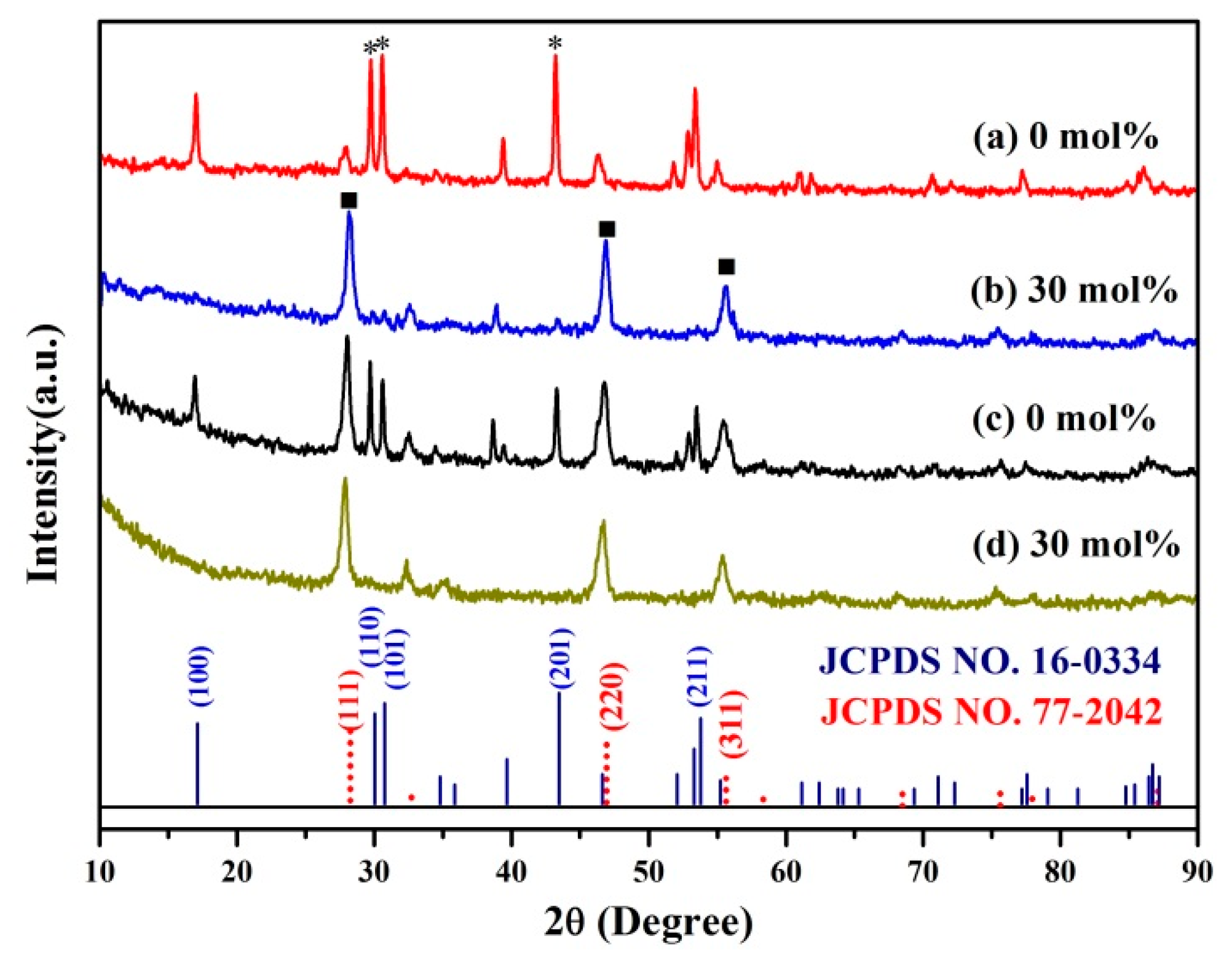
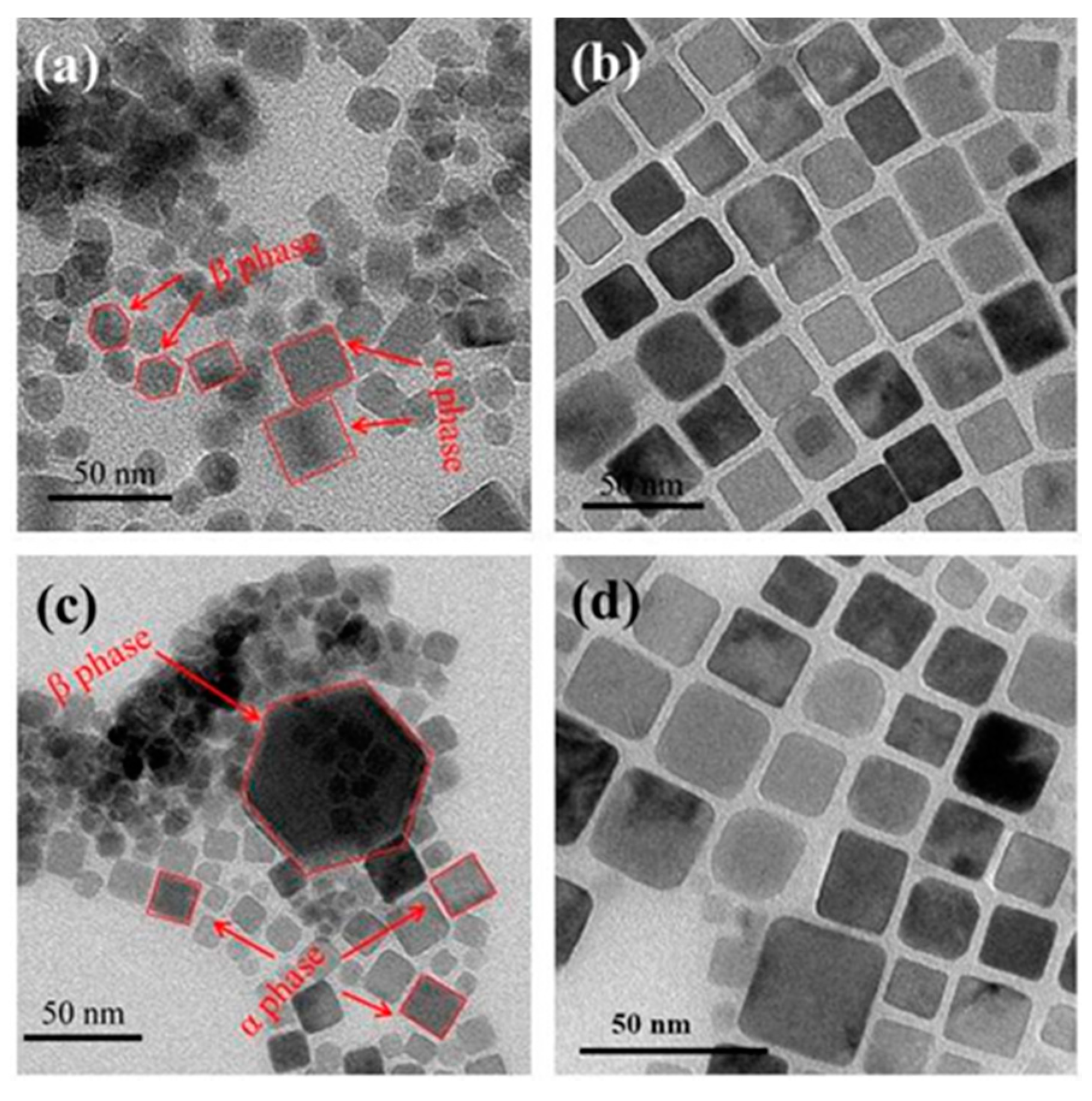

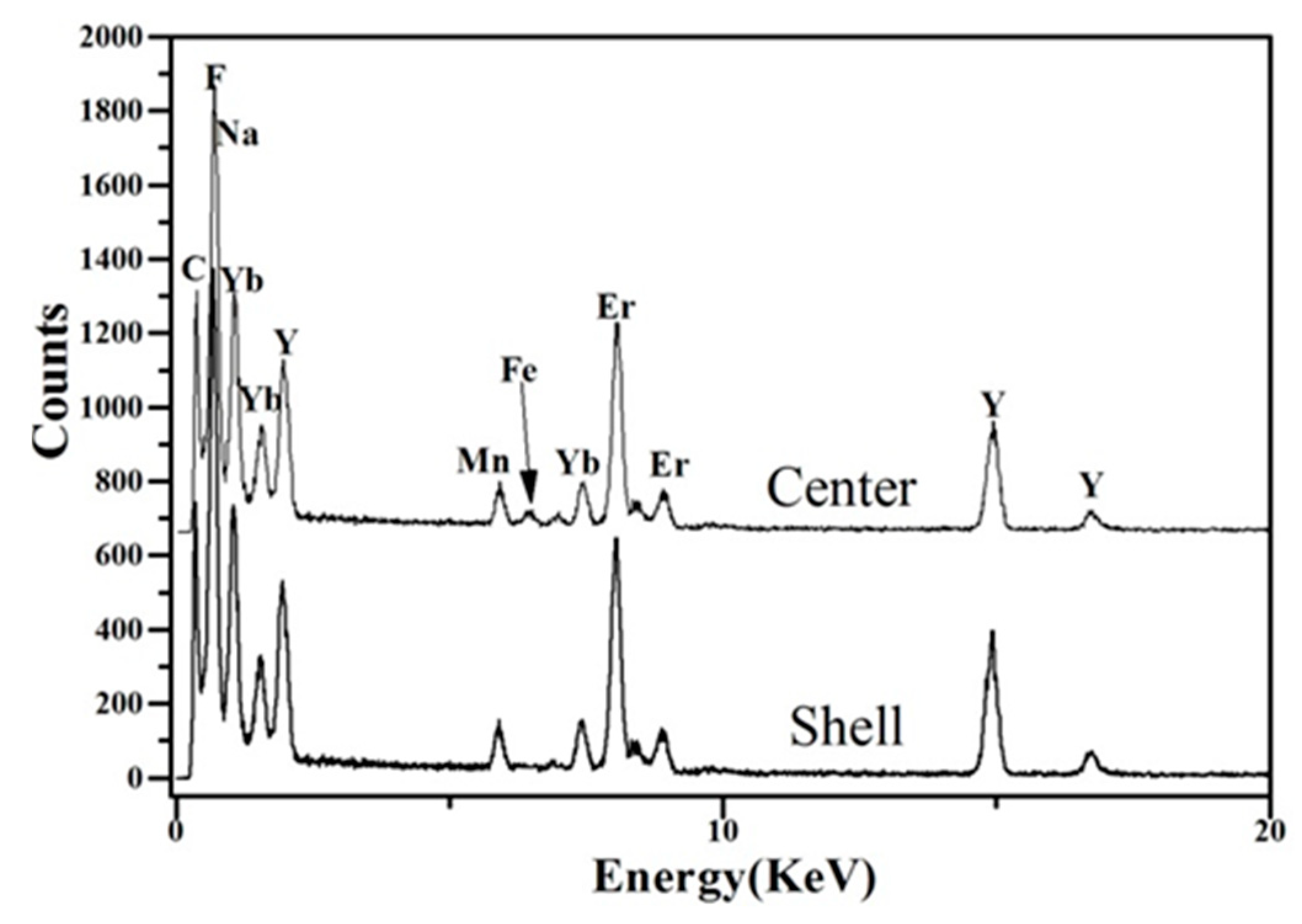


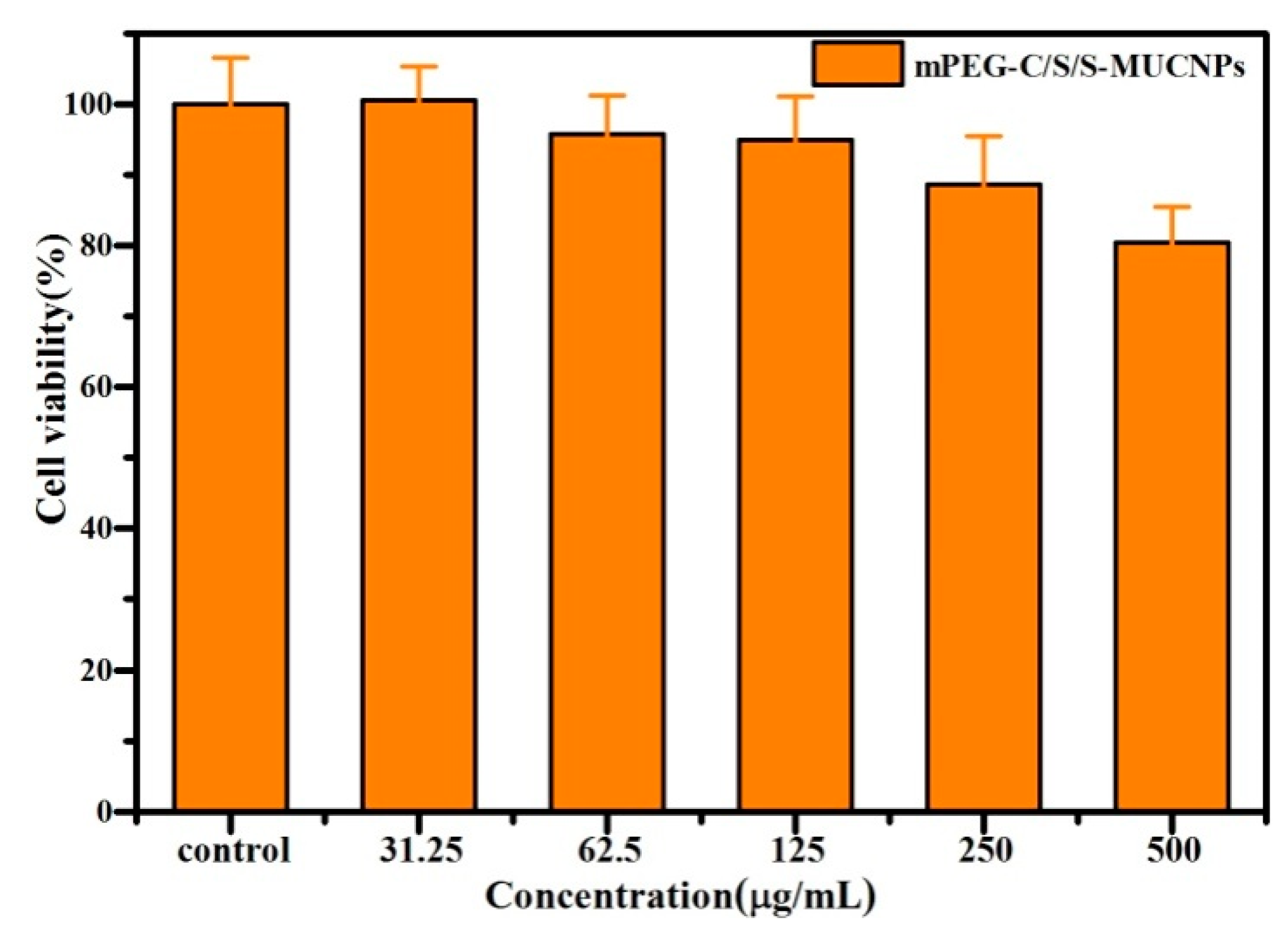



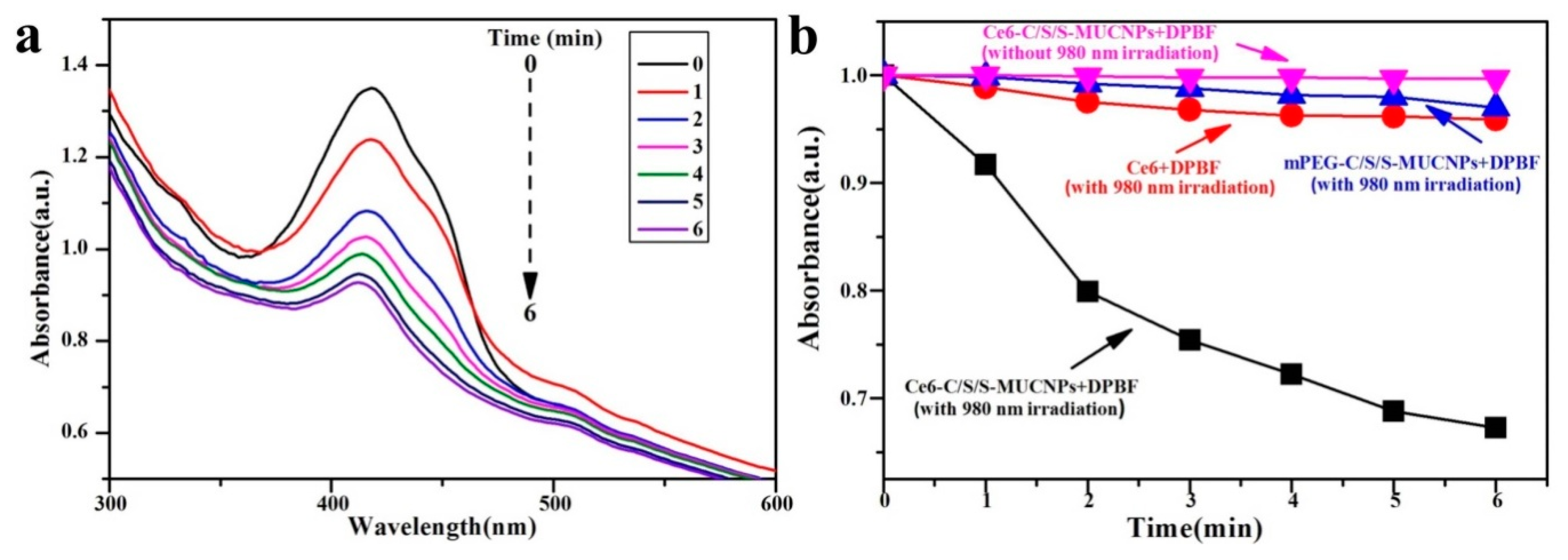

© 2018 by the authors. Licensee MDPI, Basel, Switzerland. This article is an open access article distributed under the terms and conditions of the Creative Commons Attribution (CC BY) license (http://creativecommons.org/licenses/by/4.0/).
Share and Cite
Luo, Y.; Zhang, W.; Liao, Z.; Yang, S.; Yang, S.; Li, X.; Zuo, F.; Luo, J. Role of Mn2+ Doping in the Preparation of Core-Shell Structured Fe3O4@upconversion Nanoparticles and Their Applications in T1/T2-Weighted Magnetic Resonance Imaging, Upconversion Luminescent Imaging and Near-Infrared Activated Photodynamic Therapy. Nanomaterials 2018, 8, 466. https://doi.org/10.3390/nano8070466
Luo Y, Zhang W, Liao Z, Yang S, Yang S, Li X, Zuo F, Luo J. Role of Mn2+ Doping in the Preparation of Core-Shell Structured Fe3O4@upconversion Nanoparticles and Their Applications in T1/T2-Weighted Magnetic Resonance Imaging, Upconversion Luminescent Imaging and Near-Infrared Activated Photodynamic Therapy. Nanomaterials. 2018; 8(7):466. https://doi.org/10.3390/nano8070466
Chicago/Turabian StyleLuo, Yang, Wei Zhang, Zhengfang Liao, Shengnan Yang, Shengtao Yang, Xinhua Li, Fang Zuo, and Jianbin Luo. 2018. "Role of Mn2+ Doping in the Preparation of Core-Shell Structured Fe3O4@upconversion Nanoparticles and Their Applications in T1/T2-Weighted Magnetic Resonance Imaging, Upconversion Luminescent Imaging and Near-Infrared Activated Photodynamic Therapy" Nanomaterials 8, no. 7: 466. https://doi.org/10.3390/nano8070466




